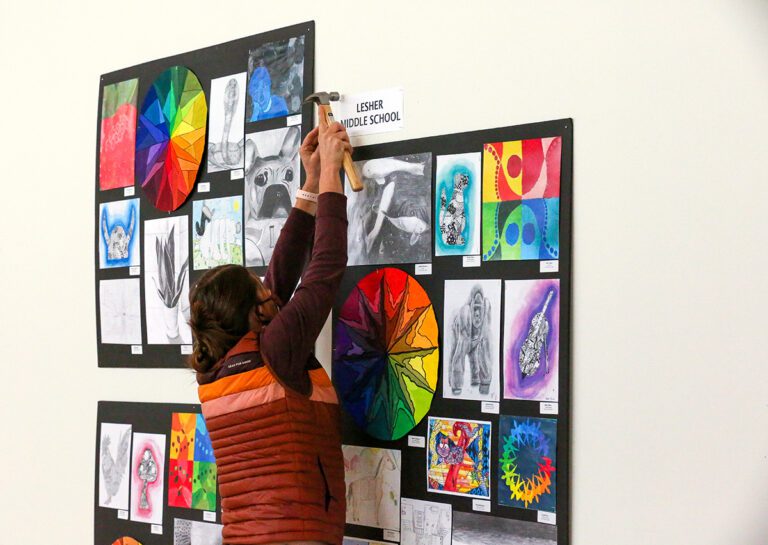The release of the AOE Studio Classes and their focus on hands-on learning has me thinking a lot about the issues of process vs. product in the art room.

We’ve all felt the pressure to have refrigerator-ready artwork strewn up and down the hallways of our schools. In fact, my former principal required that I put up a new bulletin board display every week on a rotating schedule. Now, I’m all for displaying artwork, but it’s art class, not art factory!
A few fast, fun projects can be motivational for students, but should they be the core of our curriculum? I really don’t think so.
So, here are 3 ways to turn the tables from a product-driven curriculum to a process-driven curriculum.
These even worked with my highly skeptical principal.
I hope they will work for you too!
1. Give choices.
Let students have a say in what they create. Giving ownership makes students focus more on the process and also increases motivation.
2. Put your process on display.
Show the mess. Photograph the spills. Celebrate the disastrous first draft that leads to a stunning “ah-ha” moment. Use an app (like Seesaw) or create a documentation board that visually displays all of the wonderful learning that happens behind the art room door. Then, share it with your school via your website or hallway displays.

3. Share your ultimate goal.
What do you want students to know when they leave your art room? Think about all of the big ideas that you are promoting like creativity, problem-solving, and innovation! Now, share this philosophy. Put some text alongside your displays or better yet, volunteer to put together a PD presentation for your staff.
Celebrating the process is exciting stuff. I am willing to bet you got into art education because you enjoy the process. So spread the love. It’s contagious!
How do you help students and staff see the importance
of process in the art room?
Magazine articles and podcasts are opinions of professional education contributors and do not necessarily represent the position of the Art of Education University (AOEU) or its academic offerings. Contributors use terms in the way they are most often talked about in the scope of their educational experiences.




